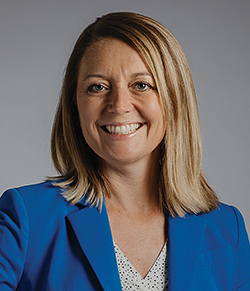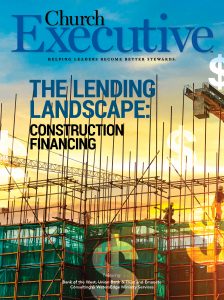
 One of the most challenging aspects of growth in a church can be the preparation and coordination of balancing space needs with financial means.
One of the most challenging aspects of growth in a church can be the preparation and coordination of balancing space needs with financial means.

VP of Church Financing
Union Bank & Trust
President
Emanate Consulting
After all, the physical building can mean so much to your church family. You want to have a certain feeling when you walk in the building. You want the building to project the heart of your church and meet the physical demands of a growing ministry at the same time — all within a budget that is reasonable.
Building a new worship center requires expertise in many fields to come together. A large building project has many moving parts, and between an architect, a contractor, a lender, a campaign manager, and your leadership team, everyone has an important part to play. Preparing for that — and managing through it, often for well over a year — can take hours of a church building committee’s time, and in many cases, the “point person” on the project becomes overburdened with a role he or she might not be prepared to embark upon.
Clearly, the “building” part of this process is only one leg of the journey to a new facility. Who will pay for this dream of ours? Do we need to borrow to make this happen? How much can we raise from our church family? How does this all fit into our church vision and mission?
Understanding the capital stack projection
These questions often require your team to develop a strategy that involves a “capital stack” projection.
Think of it as a pyramid that starts with cash on hand, then fundraising, and finally borrowing. This capital stack can help you see the vision you have for your project come to fruition. It can also help your congregation have buy-in and confidence in your project completion.
If that all sounds overwhelming and exhausting, you are not alone. Without a proper team in place, many church projects are approached with a very fragmented system that has each of the important components of your project operating independently of each other.
• The architect draws the plans based on your dreams and needs for the space.
• The capital campaign company works to raise funds for your church without knowing what the cost of the building will truly be or if there is a need for financing.
• The bank — often brought in last — provides a loan offer that might or might not be what you need to achieve the full funding of your church project.
There are many opportunities for failure in this model — too many holes in the process that could leave your church stuck waiting for funding or even divide your church family because of lack of progress.
Financing should never be your last step

The earlier you speak with a lender, the better off you are. You need to choose people who understand church lending and want to work with your organization.
It’s best for your church to be prepared to present your financial information to your congregation as well as to potential donors and lenders to get your project fully funded. Some questions you might have as you look toward the future of your church construction project:
• Do we have someone on our team with the right skills to prepare us for the next step, financially?
• Who is going to make sure our project is financially viable?
• Who will speak to the bank if a loan is needed?
• Who will have the best interest of our church in mind as we negotiate our loan terms?
• What banks even work with churches?
It might be wise to engage a professional to assist you in getting financing for your project to handle these questions. This is not a mortgage broker, but rather a true financial consultant who helps your church balance the needs of the church with the demands of a construction project. This consultant should be someone who can lead the team of experts you need to make a church construction project successful, with the church’s best interests as the priority. This consultant will work closely throughout the entire project with the rest of your professional team — meaning the architect, your general contractor, your capital campaign manager, and your financial consultant / lender are all on the same page the entire time.
With some careful planning and the right financial consultant, your church’s future goals can be well within reach.


